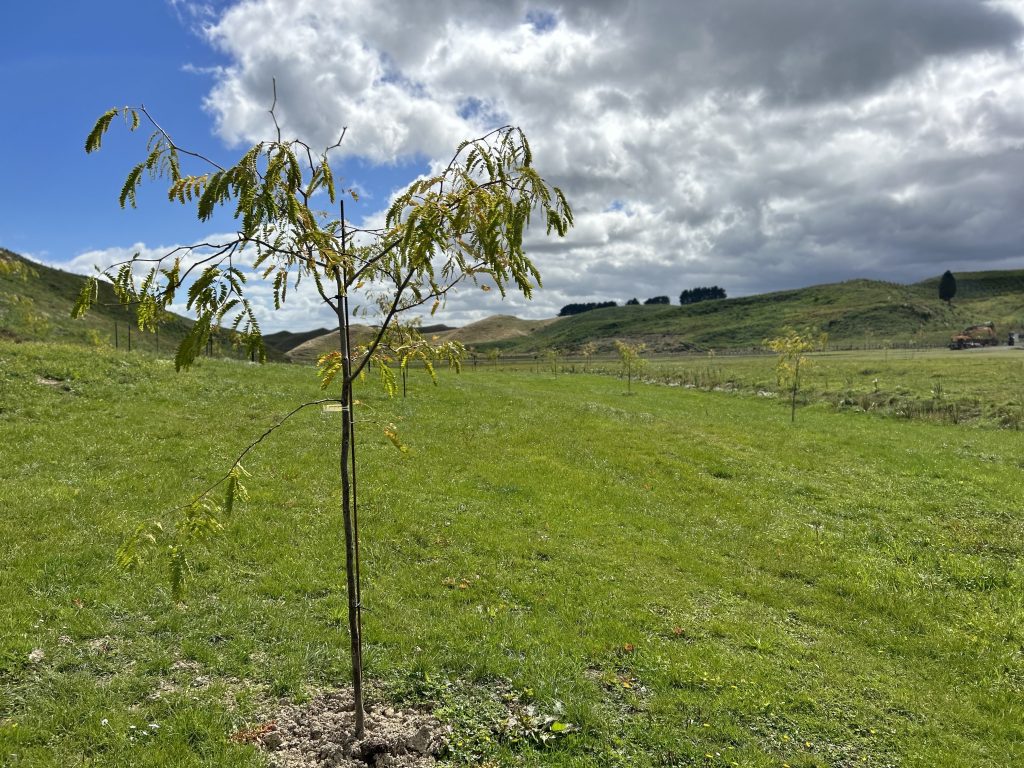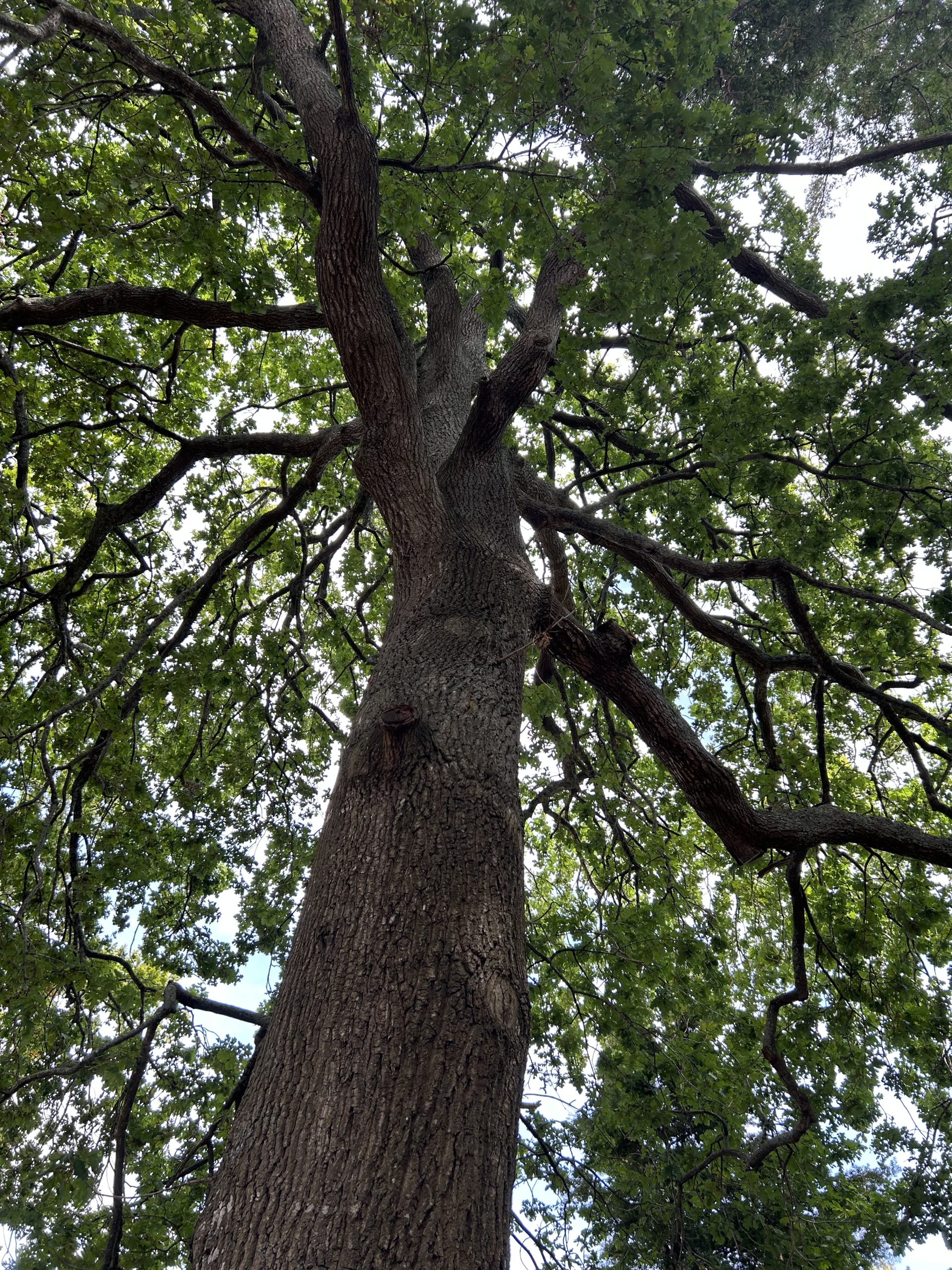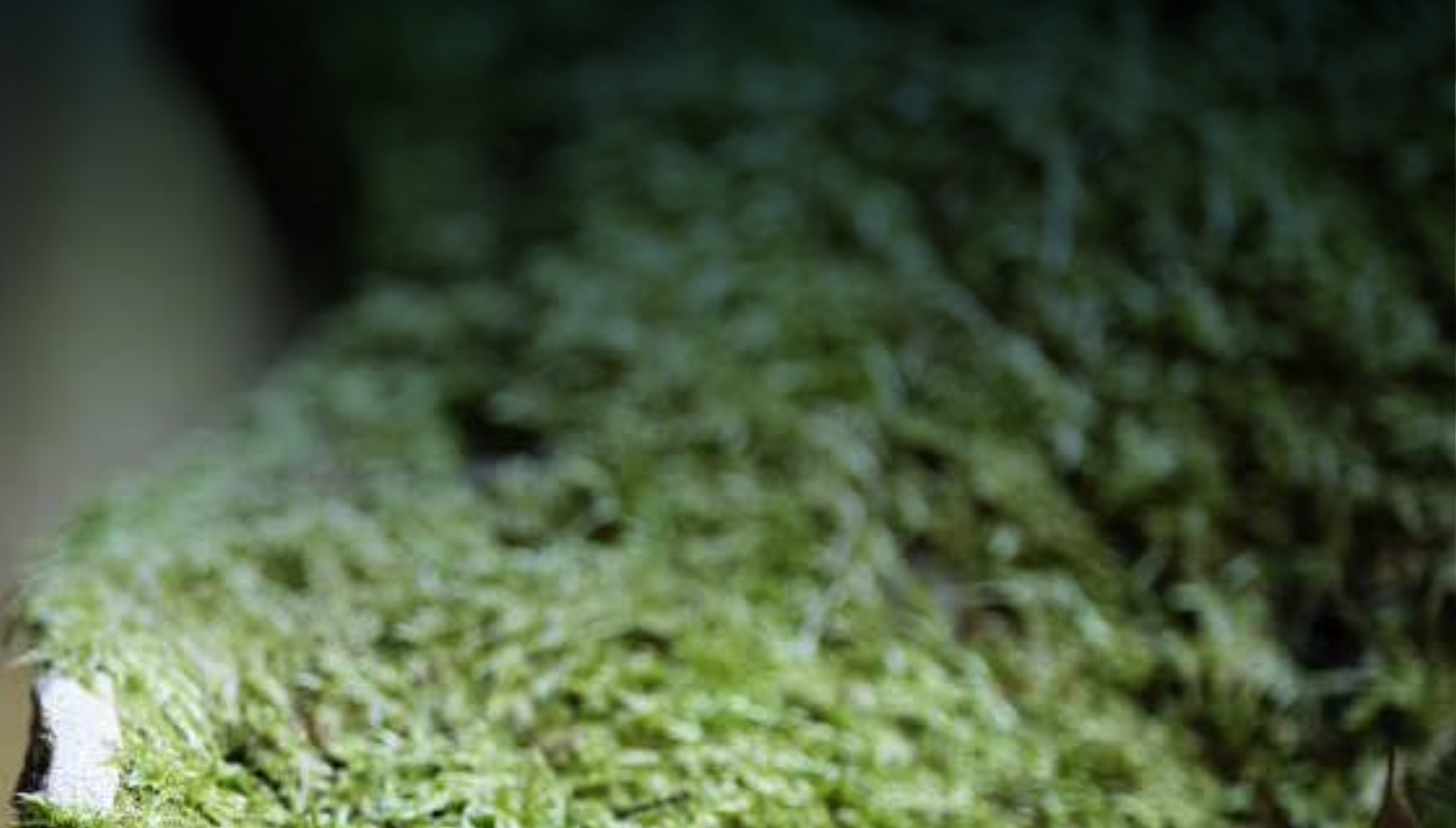Honey locusts: a productive option for agroforestry
How much could farmers save by using trees to support the growth of their livestock? Contrary to the view that trees hinder feed production on farms, the honey locust tree (Gleditsia triacanthos) produces fodder and enhances pasture growth.
Seed pods for animal fodder
During periods of the year when grass growth is inhibited by the weather (too hot and dry or too cold and wet) farmers are accustomed to feeding out hay, silage, and other stored fodder. Honey locusts offer a viable alternative.
A good honey locust will have pods that are over a foot long, their insides full of seeds high in energy. Those nutritious, calorie-dense pods naturally drop just as pasture growth is slowing down and livestock are putting on weight for the winter. Honey locust pods remain preserved on the ground for months into winter for self-harvesting by cattle and sheep, pigs, and horses. It’s not uncommon for a mature tree to yield 400 kg of pods in a season, and 50 such trees can fit in a hectare while still allowing plenty of sunlight through their dappled canopies.
Shade to manage pasture growth
The sparse canopy of a honey locust lets lots of light through to ensure continual grass growth.
Any tree provides some shade, but for seamlessly integration into pasture production, the shade needs to be just right. It must move throughout the course of the day, so that the livestock standing in that shade move with it. The canopy should also allow plenty of light through to support the growth of the grass beneath it. If leaves are small they won’t smother the grass when they fall. Ideally the tree would leaf out late in the spring, and drop leaves early, so it casts shade during the heat of the summer. Honey locusts meet all these criteria, plus more!
Nitrogen fixing
Just like clover and other legumes, honey locusts sequester nitrogen. Think of a honey locust as one big over-sized clover, taking nitrogen from the atmosphere and pumping it into the soil. Not only does this nitrogen enhance, the tree’s own growth, it also benefits the pasture surrounding it. Moreover, as the roots of a honey locusts grow deep, they pull up all types of nutrients that are otherwise inaccessible, later depositing them in upper soil horizons through leaf-drop.
Good genetics are essential
The integration of honey locust into an agroforestry platform requires careful seed selection. Seeds should come from quality-genetic, thornless, high-yielding, high-energy-pod-producing honey locusts.
Good honey locusts might as well have been custom-made to compliment grazing. One would be hard-pressed to come up with a better tree!




